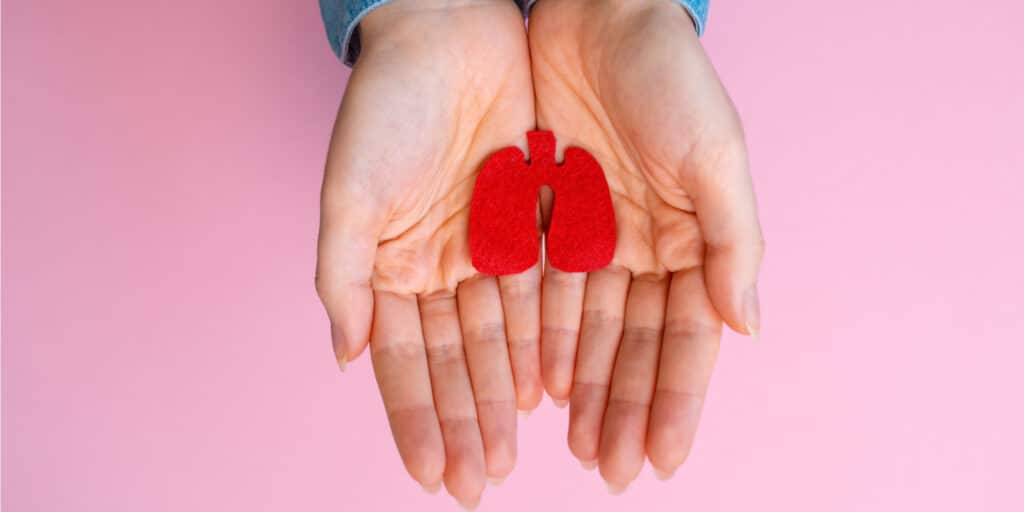A recent study published in the New England Journal of Medicine has found that the treatment duration for the majority of children with nonsevere tuberculosis (TB) can be shortened from six to four months, thereby reducing the burden on families and healthcare systems around the world. The study also found that the shortened duration of treatment did not decrease efficacy, and provided similar results to the standard six-month regimen.
What Is Nonsevere TB?

More than 1 million children become ill with TB every year, and as a result, nearly 20% of them die. Nearly two-thirds of all children with TB have what is known as nonsevere TB. This type of TB is commonly referred to as smear-negative TB, meaning the person with the condition carries a smaller bacterial load than those with smear-positive TB.
“People think that a child with TB must be very sick — that’s not true. It is known that two-thirds of children who fall ill with TB every year have non-severe TB and therefore could be treated with shorter treatment,” said Anna Turkova, M.D., of University College London (UCL) and the study’s lead author, in a press release.
Nonsevere TB cases do not require the same intensity and duration of treatment as smear-positive cases, however, children (who represent the largest subset of people with nonsevere TB) have historically been excluded from clinical efficacy trials of antituberculosis treatment. This is due, in part, to low rates of timely diagnoses, contact tracing, and knowledge of drug susceptibility.
Scientists also struggle to obtain respiratory specimens from children with nonsevere TB, as the disease can often go unnoticed. As a result, treatment options for children with nonsevere TB typically rely on data extrapolated from trials involving adults, which are usually comprised of smear-positive individuals.
About the Study
The study was led by a team of researchers from UCL and consisted of 1,204 children between the ages of two months and 16 years, all of whom had nonsevere TB. The children were divided randomly into two groups: one which would receive the standard, six-month treatment, and the other would receive a shorter, four-month treatment. Of the enrolled children, 11% were living with HIV. All children were followed for 18 months after enrolment to see whether their treatment had been successful.
The treatment course used in this trial consisted of 8 weeks of initial standard therapy for both groups with isoniazid, rifampin, pyrazinamide, and, depending on local guidelines, ethambutol. Afterward, the 4-month group received an additional 8 weeks of standard therapy with isoniazid and rifampin, while the 6-month group continued standard therapy for 16 weeks. Treatments were given in a child-friendly formula. Retention and adherence were both high, at 95% and 94%, respectively.
After 18 months, the results clearly showed that children who received the shorter, four-month course did just as well as those on the standard six-month treatment regimen, regardless of the age group or HIV status, with few side effects observed in both groups.
There were 192 serious adverse events in 150 participants spread over both groups of the intervention. Twelve deaths occurred in the 4-month group and 19 occurred in the 6-month group. Of the 31 total deaths, 25 were in children younger than two, the researchers noted.
In addition, 66 participants were hospitalized for a respiratory bacterial infection. Of those, 26 participants in the 4-month group and 19 in the 6-month group were hospitalized after month 4 of treatment, Turkova and colleagues reported. Fifteen children experienced severe adverse drug reactions.
There were no significant differences between groups in time-to-event analyses of unfavorable status and death, the investigators said.
Based on the results of this study, the World Health Organization (WHO) released a rapid communication recommending the 4-month regimen over the 6-month regimen in children with non-severe, presumed drug-susceptible TB. Their full guidelines have yet to be published.
Lead investigator at the Zambian trial site, Dr. Chishala Chabala (University Teaching Hospital, Lusaka, Zambia), said, “Children are often presenting with mild disease. If they are diagnosed on time, they can now be treated with a shorter course. The SHINE results are an opportunity to improve treatment of children with TB.”
Implications of Shorter Treatment for Nonsevere TB

Unlike most adult patients, most children who become ill with TB develop nonsevere TB. Yet despite children being more likely to have nonsevere TB, until now their treatment length has been based on the results of trials in adults, requiring six months of a combination of daily medicines.
“TB remains a major health burden for children and so reducing treatment time by two months will have a major impact on the health and wellbeing of children affected by TB,” said Jill Jones, Head of Global Health Strategy at the Medical Research Council.
Spending less time on treatment will mean fewer clinic visits, as well as making it easier to complete the full course of medicine. Savings to TB programs can instead be spent on improving access to screening and diagnostic tests for the disease, which can be poor at lower-level health facilities, as well as on training health care workers.
“Challenges remain in terms of the availability of child-friendly formulations of rifapentine and moxifloxacin, data on doses in children, and cost,” Turkova and colleagues wrote. “However, our results show that a new regimen with new drugs is not necessary for the shortening of treatment in the majority of children with drug-susceptible tuberculosis since such treatment shortening can be accomplished with the affordable, child-friendly, fixed-dose combinations that are already available.”
The study also found that the 4-month treatment was more cost-effective, saving approximately $17 per child. Researchers with the study say that this cost reduction could be used to improve the screening coverage and find missing children with TB.
“This study elegantly shows the majority of children do not need a full 6 months of therapy and can be safely treated with 4 months of standard TB medications with good outcomes,” said Nicole Salazar-Austin, MD, ScM, of Johns Hopkins University School of Medicine in Baltimore, who was not involved in the study.”
Have You Heard of This New Study on Nonsevere TB Treatment?
Let us know in the comments section below!
What topics related to tuberculosis or recent medical discoveries should we cover next?
Email us your ideas at info@painresource.com, we may just feature your idea in a future article!
Want to join the internet’s fastest-growing chronic pain community?

